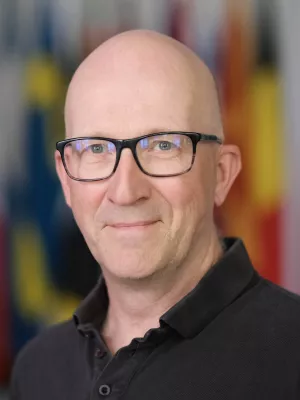
Peter Arnfalk
Senior lecturer

Green IT in Practice: Virtual Meetings in Swedish Public Agencies
Author
Summary, in English
This paper presents and discusses how virtual meetings (VMs) can be used as a Green IT-measure in an organization, by analyzing the experiences and results from the project ‘REMM’ involving 20 public agencies in Sweden. The paper describes the methodology used in the REMM project, how progress and results have been monitored, evaluating how well the approach has worked out and discussing how applicable it could be outside the Swedish public agency context. Some of the challenges the agencies have faced when trying to alter their employees’ meetings and communication routines are presented. The idea of using VMs as a tool to reduce environmental impact by substituting business travel is also discussed, taking rebound effects into account, as well as the need for complementary policy tools.
The REMM project was initiated to support agencies in building capacity for more and better VMs in their organization. The methodology, based on a ten-step implementation approach, was well received and applied by the agencies. In the cases where follow-up progress measurements could be made, the share of VMs increased in REMM agencies on average from 46 – 60 % between the years 2011 - 2013.
Employees in the REMM agencies experienced that one out of three VMs replaced a business trip that they would have made if the VM option was not at hand. But the time and money saved by avoiding a trip is in seven out of ten times used for more work. This, in turn, can lead to the generation of more emissions, counteracting the reduction from the replaced trips in the first place. Hence the reductions in travel volumes or emission cuts are lower than what would be expected from the amounts of substituted trips.
The REMM project was initiated to support agencies in building capacity for more and better VMs in their organization. The methodology, based on a ten-step implementation approach, was well received and applied by the agencies. In the cases where follow-up progress measurements could be made, the share of VMs increased in REMM agencies on average from 46 – 60 % between the years 2011 - 2013.
Employees in the REMM agencies experienced that one out of three VMs replaced a business trip that they would have made if the VM option was not at hand. But the time and money saved by avoiding a trip is in seven out of ten times used for more work. This, in turn, can lead to the generation of more emissions, counteracting the reduction from the replaced trips in the first place. Hence the reductions in travel volumes or emission cuts are lower than what would be expected from the amounts of substituted trips.
Department/s
- The International Institute for Industrial Environmental Economics
Publishing year
2016
Language
English
Pages
101-101
Publication/Series
Journal of Cleaner Production
Volume
123
Document type
Journal article
Publisher
Elsevier, Elsevier
Topic
- Political Science
- Media and Communications
- Earth and Related Environmental Sciences
Keywords
- virtual meetings
- teleconferencing
- videoconference
- Green IT
- business travel
- web meetings
- collaboration.
Status
Published
ISBN/ISSN/Other
- ISSN: 0959-6526

